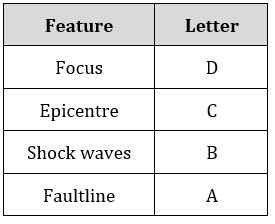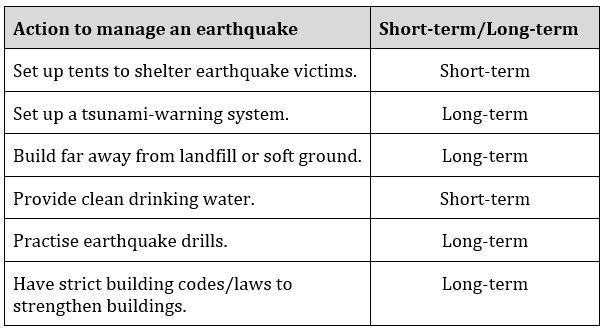Question
- Junior Cert Geography (Common) Edco Sample A Q2
- Back to the question >
Answer
(a)

(b)

(c)
(i) The term aftershock is used to describe a shaking event that follows an earthquake. Aftershocks are dangerous because they are unpredictable. They can be of a large magnitude and can cause buildings that were damaged in the earthquake to collapse.
(ii) Reasons:
- The epicentre was only 25 km southwest of the Haitian capital of Port-au-Prince. This is a highly populated city with a high density of people. Many people died as a result.
- A magnitude of 7.0 is a major earthquake on the Richter Scale. This would have shaken buildings. It was followed by two aftershocks of magnitudes 5.9 and 5.5, which would have made structures collapse, killing more people.
(iii) Plates at the crust move because of the intense heat in the Earth’s core causing molten rock in the mantle layer to move. It moves in a process called convection currents, which form when warm magma rises, cools and eventually sinks down. As the cooled magma sinks down, it is warmed and rises again in a circular motion. The convection currents move the plates. Where convection currents diverge near the Earth’s crust, they can form a mid-ocean ridge; where convection currents converge, plates move towards each other to form a volcano, fold mountain or earthquake.
